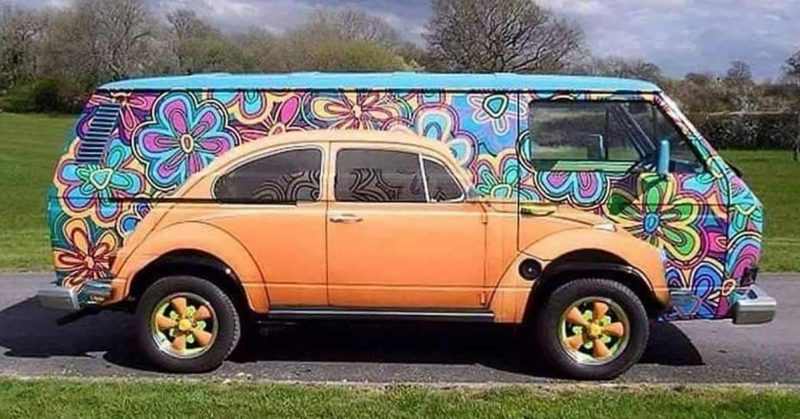There are many changes that have marked the 20th century. And when it comes to the vehicles, the Volkswagen Beetle was truly one of the biggest symbols of the century. Ever since it was created, The Volkswagen became an honored brand, which is still valued to this day.
However, many just love the company’s second biggest creation, which is the rebellious microbus. It offered a slow, but very safe experience, for both passengers, and drivers, as well as the opportunity for both to enjoy the scenery.
On the 8th of March, 1950, the production of the Volkswagen Microbus, which was also known as the Volkswagen type 2 began.
It was introduced in the United States as a competition to other vans which were sold through the States, such as the Dodge A100, Chevrolet Corvair 95 Corvan, and the Ford Econoline.
The van was very space-efficient, and the passenger version of it could carry up to nine people, in the three rows of bench seats.
Its advantageous plan made it mainstream among nonconformists, so it inevitably got known as the ‘hipster bus.’ According to McKeel Hagerty, great vehicle advertise master and the CEO of Hagerty Insurance, the radicals went gaga for it since ‘it was cheap to maintain, simple to work on, and sufficiently large to live in.’
This vehicle propelled proprietors to paint different vivid wall paintings on it, and they regularly supplanted the Volkswagen logo on the front with a harmony image. Much the same as the Beetle, it was an image of freedom and unconventionality for an entire generation of Americans.
It has various different epithets too, such as EuroVan, Vanagon, Splittie, Bulli, Campervan, Kombi, and Samba.
It’s straightforward, yet effective, plan was a craftsmanship of Dutch businessman Ben Pon, a Volkswagen merchant in 1947. He spotted utilitarian work trucklets around the production line, with their motors put at the back, so he portrayed the possibility of their van form on paper.
The organization’s officials saw the potential in the thought, and soon, the microbus was made. A few reports demonstrate that in the primary year of large scale manufacturing, the organization delivered around 10,000 of the original of Volkswagen Type 2, the Model T1.
Chair of the Transportation Design Department at Art Center College of Design in Pasadena, CA, Stewart Reed said:
If you think about the 1950s, enormous American vehicles with striking flame broil proclamations were all over. At the point when you experienced a microbus with a full painted face, two-tone trim and a major VW identification – that was something totally extraordinary coming at you in the city.
This bus has been manufactured in a few models over the years.
The original ran for around 18 years, as the first plan made due until 1967. It had a part windshield design, a 44-strength motor, and removable center and back seats.

The next generation included several adjustments, and the engine was upgraded to 65 horsepower, while the split windshield was replaced with a wrap around window.

The 80s saw the creation of Vanagons, the third era of these transports, furnished with water-cooled motors, and a few changes in the plan. While their high duties made their creation and deal in the U.S. brief, these transports were still created in Germany, Argentina, Brazil, Mexico, and Australia.

Because of the ecological enactment that not, at this point upheld the structure of back motor vehicles, Volkswagen declared the finish of the creation of the microbus in 2013.


However, the model is still among the most loved ones of the majority. Consequently, the organization began researching potential approaches to restore it.
Presently, it plans to build up the idea of an electric Volkswagen Type 2 transport, whose structure will be generally the equivalent, to our pleasure!



The 2022 Volkswagen Microbus recognizes the notable Type 2 Microbus, and Volkswagen’s U.S. chief, Johan de Nysschen, affirmed that it will be go into creation in 2022 and will be gathered in Germany, however it will be sold all around the world, including North America!

We’re eagerly waiting for the new design of the future, all-time classic!












